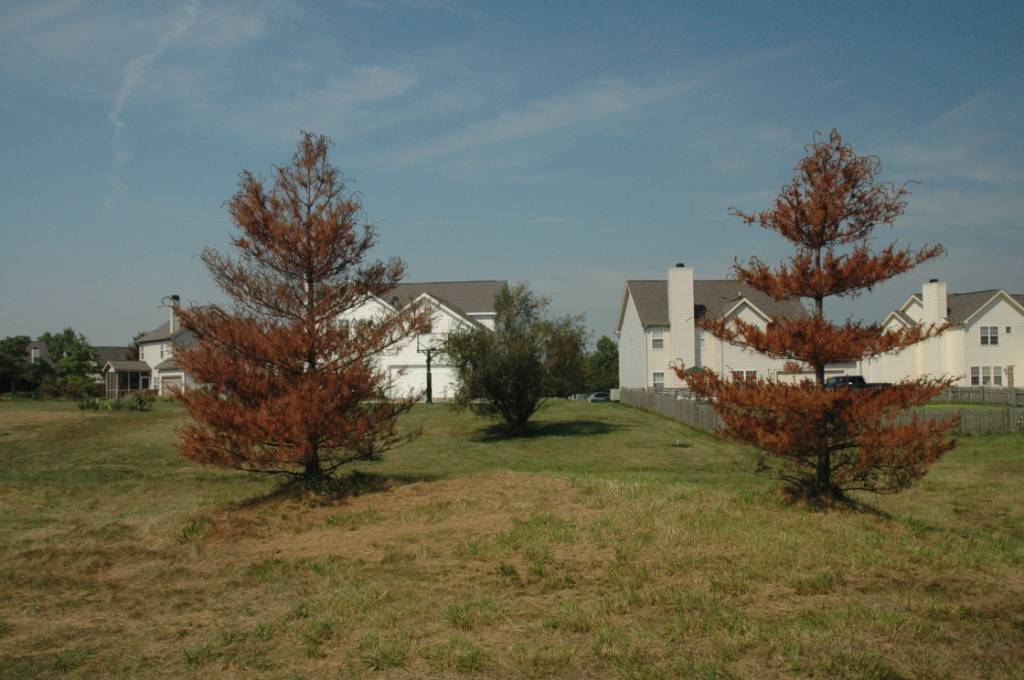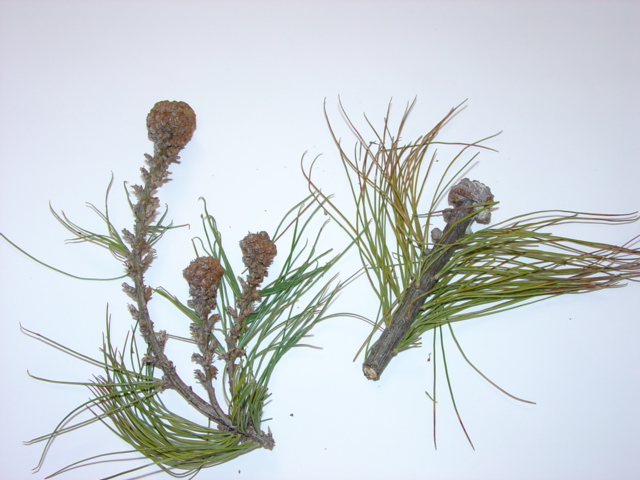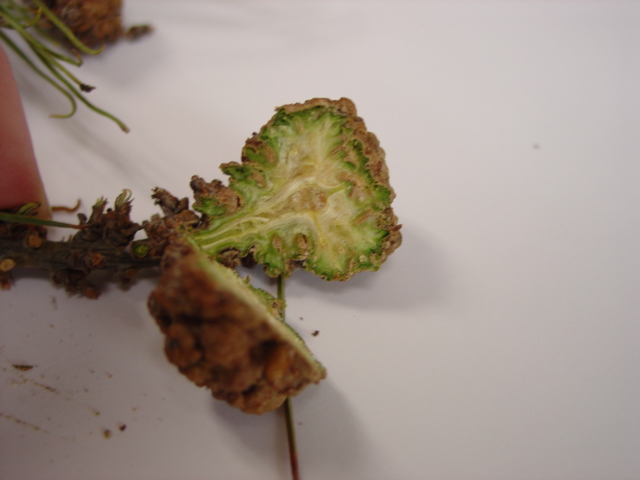As many of you know, numerous homeowners and golf courses in the Midwest experienced substantial damage to trees, especially conifers as a result of application of Imprelis, a new turf herbicide that was released by DuPont in fall 2010. If you do a google image search for ‘Imprelis’ you can see lots of photos of the typical damage we observed in summer 2011, when most Imprelis damage became apparent. The usual symptom of Imprelis exposure were brown, twisted and stunted shoots or trees killed outright.

White pine killed by Imprelis – July 2011. Photo: Bert Cregg

Shoot damage – July 2011. Photo: Bert Cregg
Today, however, I received some images from an Extension Educator in southwest Michigan that turned my stomach. So what happens when trees that weren’t killed by Imprelis try to resume growth? The results are not for the feint of heart.

‘Club-like’ shoots – March 2013. Photo: Beth Clawson.

‘Tumor-like’ growths at the ends of shoots – March 2013. Photo: Beth Clawson.

Imprelis damaged shoot cross section – March 2013. Photo: Beth Clawson.
The long term implications of this “chemical spill” are pretty frightning. Can you suggest resources to consult re: disposal of contaminated soils and trees, options for replanting (plant material and soil replacement). I’ve gotten good information from U of MN Extension and the Plant Health Doctors. As an EMG and business owner, I am always looking for good, reliable information for teaching! That’s why I follow the Garden Professors! Thank you so much.
Donna Herman
No Stress Gardening and Landscapes
*faint of heart
This is why I quit putting herbicides on lawns more than thirty years ago. Any reliable research yet on remediation of the damaged areas? What about health implications for mammals that are exposed to the spray or who have nibbled upon the sprayed plant matter?